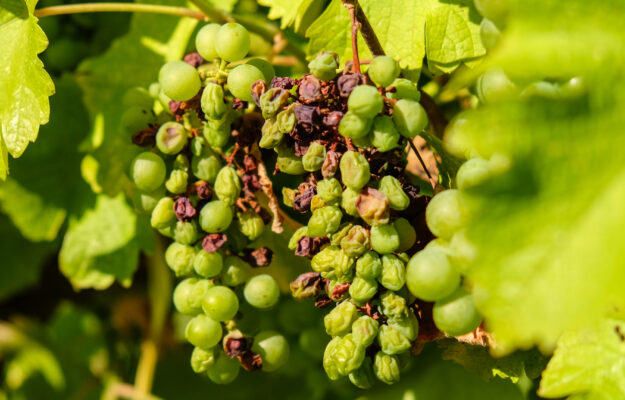Floods, hailstorms and late frosts. Then high temperatures and drought warnings in southern Italy, with Sicily currently the hardest hit region. The weather has been mowing down agriculture for several years, and the damage that is caused then presents the bill: wine is the sector that, in 2023, suffered the most, recording a decrease in production by volume of -17.4% over the previous year, according to the latest ISTAT report on agricultural economic trends. The sector is suffering, but it is not the only one: negative figures were also reported for olive oil (-3%), fruit (-11.2%), floriculture (-3.9%), agricultural support activities (-1.6%) and the livestock sector (-0.9%). Overall, output and value added of the agriculture, forestry and fishing sector declined by 1.8% and 2.5% in real terms in 2023, respectively. Also affected is employment, which declined by 2.4%. Investment is down in both value (-2.6%) and volume (-1.5%).
As the Statistical Institute writes, wine production suffered cuts that caused it to return to 2017 levels: "if the heat and the absence of rainfall positively affected the quality of the grapes, the prolongation of these weather conditions in the autumn period caused a substantial reduction in the harvest." The biggest drop in production was in Abruzzo (-55.2%) and heavy losses were also recorded in the regions of Marche (-38.4%), Puglia (-34.2%), Umbria (-30.7%), Lazio (-30.2%), Campania (-30.0%) and Tuscany (-24.3%). The only increases in production volumes are in Liguria, Emilia-Romagna, Molise, Calabria and Basilicata.
Production at the national level of the olive sector, however, was below the average of recent years, with rather differentiated results across the territory. Cool, wet weather during flowering compromised harvests in many areas of the Center: however, prolonged high temperatures in the second part of the year helped control typical olive tree pathogens, which, in recent years, had caused much damage, especially in the South. The positive results recorded in the southern regions (+3.4% in Calabria, +3.2% in Campania, +1.6% in Apulia) were not enough, however, to compensate for the substantial reduction in volumes found in the Center (-32.8% in Umbria, -22.9% in Marche, -18.3% in Tuscany, -11.2% in Lazio). And after a positive trend in 2022, fruit production in 2023 was impacted by extreme weather phenomena, especially hailstorms and late frosts, which characterized the first part of the year. All major crops suffered, especially pears, cherries, nectarines, plums, and apricots, and almost all regions consequently experienced large drops in yields: worst of all was Veneto (-45.2%), followed by Emilia-Romagna (-42.1%), Tuscany (-23.2%), and Lombardy (-20.5%). However, the decrease in citrus production was smaller (-0.7%), with the most negative figure recorded in Calabria (-6.6%).
The production decline in the livestock sector saw a decrease especially in beef (-2.6%) after the growth recorded in the previous year. Among by-products, milk volumes still declined (-1.1%), in addition to the persistent crisis in honey (-10.9%). Happy notes are the favorable year for industrial plants (+10.2%), cereals (+6.6%) and secondary activities (+7.2%). Producer price growth then continued in 2023 (+3.9%), but at lower rates than in the previous year, while the industry’s cost run came to a halt, with prices falling 2.5%, especially from the second half of the year.
The climate, however, Istat reports, held back the agricultural economy but not agribusiness. The value added of the food, beverage, and tobacco industry increased by 2.7% in volume, while that of the agribusiness sector was essentially unchanged on the previous year (+0.1%). The agribusiness sector’s share of the total economy improved to 4.2% in 2023 from 3.8%, thanks to a strengthening of the food industry’s contribution (2% from 1.6% in 2022). Finally, at the European level, Italy was confirmed in second place for value added and third for value of production among the 27 EU countries, where the average decline was 0.4% and 0.8%, respectively. Among the main producing countries, the decline affected, in particular, Greece (-15.2%), Denmark (-8.3%) and Spain (-8.0%), with negative trends also recorded in Ireland (-4.4%) and the Netherlands (-1.0%); increases, however, in Hungary (+25.2%), Romania (+15.6%), France (+2.9%) and Germany (+2%).
Copyright © 2000/2025
Contatti: info@winenews.it
Seguici anche su Twitter: @WineNewsIt
Seguici anche su Facebook: @winenewsit
Questo articolo è tratto dall'archivio di WineNews - Tutti i diritti riservati - Copyright © 2000/2025









































































































































































































